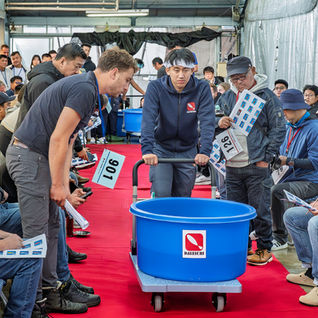Japan’s Global Exports of Nishikigoi
- Kevin Warren

- Aug 10
- 3 min read
Updated: 5 days ago
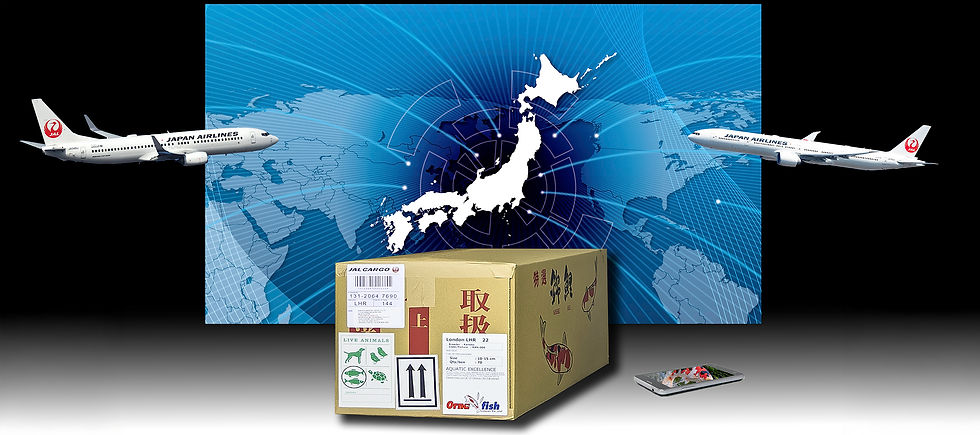
In Japan, the Ministry of Finance (MOF) is responsible for data collected and maintained by The Ministry of Agriculture, Forestry and Fisheries. This is where Japan's Global Exports of Nishikigoi data is found. In Japan’s customs data, koi are contained within the designation of commodity code HS 030110. MOF assigns a nine-digit statistical code that nests under this six-digit HS class; export partners and values are published monthly and rolled up annually on the MOF e-Stat portal (“Country by Commodity,” Export). These are the canonical numbers used across government and industry when quoting koi export performance since 2018.
The Breadth of the market
The koi trade is truly global. Pulling MOF’s “Country by Commodity” export data for HS 030110 reveals a familiar regional distribution:
• East Asia (notably Mainland China/Hong Kong/Taiwan)
• Southeast Asia (Indonesia, Vietnam, Thailand, Malaysia,)
• Europe (Netherlands, Germany, United Kingdom, Italy, France…)
• North America (United States, Canada)
• Middle East (United Arab Emirates and neighbors)
• Oceania & Africa (smaller but consistent demand)
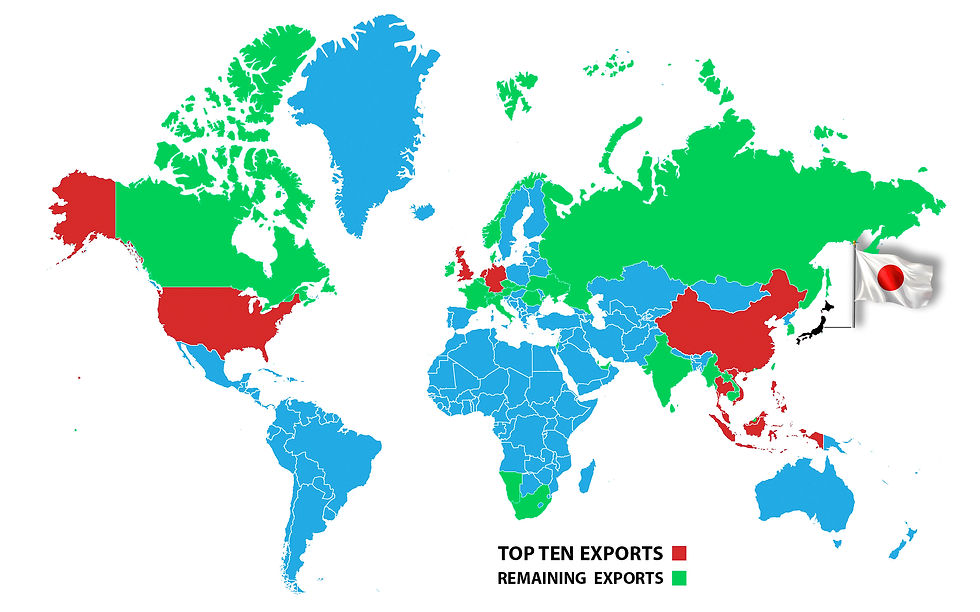
Top Ten Export Markets of Koi from Japan
USA
China
Indonesia
Vietnam
Hong Kong
Netherlands
Germany
United Kingdom
Thailand
Malaysia
*Data below excludes the year 2025 because it has not ended at time of publication.
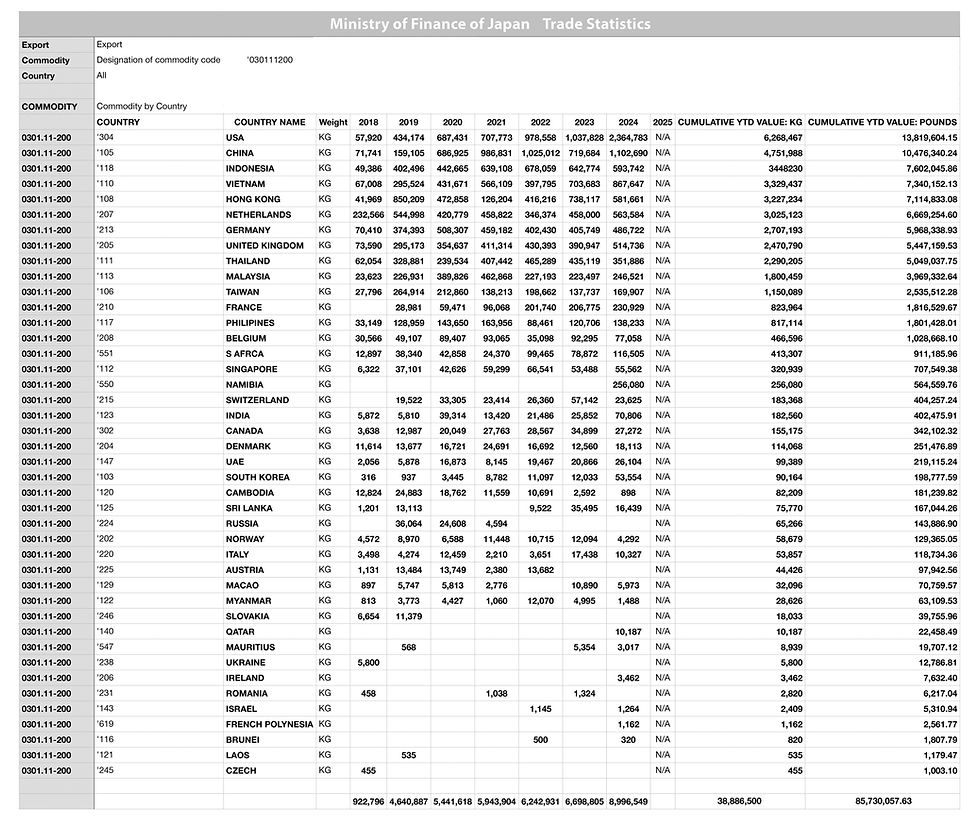
State of the Koi Market
Since official data collection began in 2018, the koi export market has grown by an extraordinary 874.92%, increasing from 922,796 kg (2,131,420 lb) to 8,996,549 kg (19,833,995 lb).
Remarkably, the period during COVID-19, from 2020 to 2022, also saw growth, albeit at a more modest 14.73%.
COVID19 Koi Export Figures
2020 - 5,441,618 kg 11,996,714 lb.
2021 - 5,943,904 kg 13,104,065 lb.
2022 - 6,242,931 kg. 13,763,306 lb.
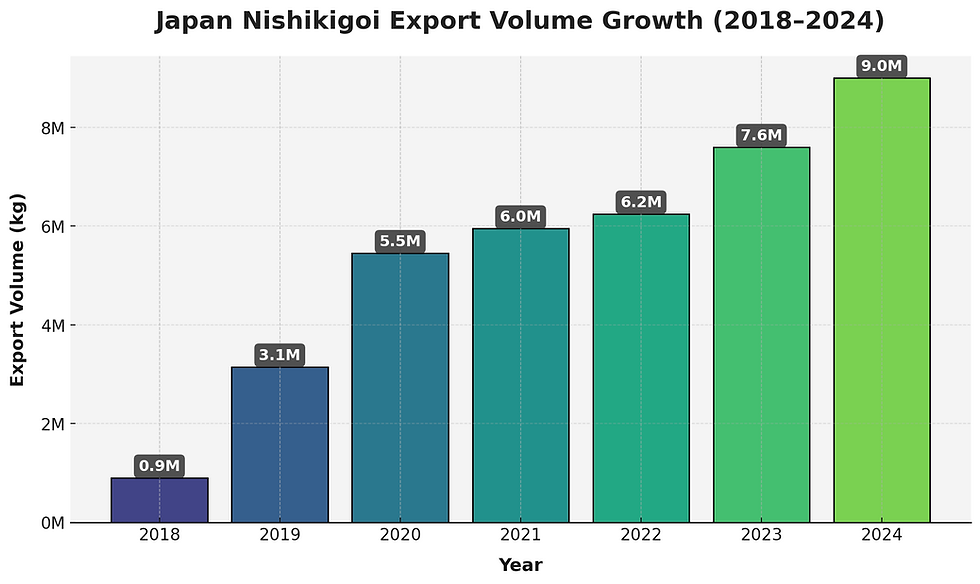
In Closing
This data is government data with all the discrepancies that can occur. Individual breeder, broker, data may not match exactly what is shown in government data. Human error in government, error more broadly. The distribution shown in government data only includes raw data, not real-world practices. For example, Koi shipments may be to specific countries for reasons of where the airlines will deliver to. Individual dealers from neighboring countries may be picking up their Koi in another country due to the logistics of Koi cargo transport, especially in Europe. War and other real-life issues can impact data as well.
It’s not for the Editor of Koi Waters to make broad predictions on the market of or for Nishikigoi. The data provided here can only be used as a tool for analysis by those in the trade qualified to do so.
The All Japan Nishikigoi Promotion Association is the leading entity with regard to the promotion of Nishikigoi. I believe the AJNPA is best suited, through careful collaboration with its members, to use the data that the Japanese government provides in addition to their own and assess how they can best use it as a group.
Disclosure: Koi Waters is not responsible for errors in data collected from the original stated sources. Everyone using this data should themselves fact-check and scrutinize the figures before using them for decision-making purposes.






